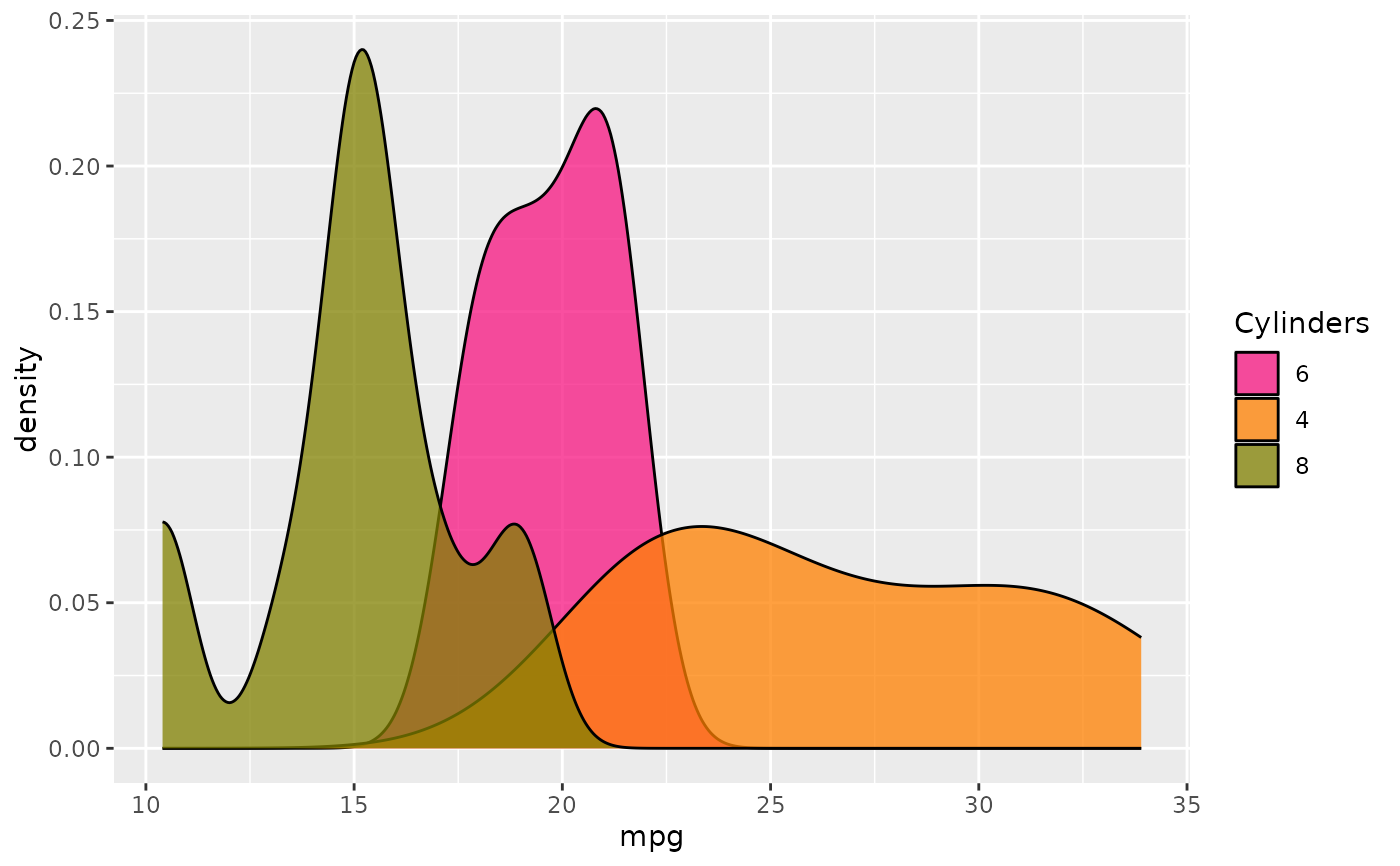A collection of discrete fill scales that use palettes which mirror the colour schemes available in GraphPad Prism.
scale_fill_prism(palette = "colors", ...)Arguments
- palette
string. Palette name, seelengths(ggprism_data$fill_palettes)for valid palette names.- ...
Arguments passed on to
ggplot2::discrete_scalenameThe name of the scale. Used as the axis or legend title. If
waiver(), the default, the name of the scale is taken from the first mapping used for that aesthetic. IfNULL, the legend title will be omitted.breaksOne of:
labelsOne of:
NULLfor no labelswaiver()for the default labels computed by the transformation objectA character vector giving labels (must be same length as
breaks)An expression vector (must be the same length as breaks). See ?plotmath for details.
A function that takes the breaks as input and returns labels as output. Also accepts rlang lambda function notation.
limitsOne of:
NULLto use the default scale valuesA character vector that defines possible values of the scale and their order
A function that accepts the existing (automatic) values and returns new ones. Also accepts rlang lambda function notation.
expandFor position scales, a vector of range expansion constants used to add some padding around the data to ensure that they are placed some distance away from the axes. Use the convenience function
expansion()to generate the values for theexpandargument. The defaults are to expand the scale by 5% on each side for continuous variables, and by 0.6 units on each side for discrete variables.na.translateUnlike continuous scales, discrete scales can easily show missing values, and do so by default. If you want to remove missing values from a discrete scale, specify
na.translate = FALSE.na.valueIf
na.translate = TRUE, what aesthetic value should the missing values be displayed as? Does not apply to position scales whereNAis always placed at the far right.dropShould unused factor levels be omitted from the scale? The default,
TRUE, uses the levels that appear in the data;FALSEincludes the levels in the factor. Please note that to display every level in a legend, the layer should useshow.legend = TRUE.guideA function used to create a guide or its name. See
guides()for more information.positionFor position scales, The position of the axis.
leftorrightfor y axes,toporbottomfor x axes.callThe
callused to construct the scale for reporting messages.superThe super class to use for the constructed scale
Value
Returns a ggproto object of class ScaleDiscrete which works with fill aesthetics.
Examples
library(ggplot2)
## base plot
base <- ggplot(mtcars, aes(x = mpg, fill = factor(cyl))) +
geom_density(alpha = 0.75)
## works pretty much the same as ggplot2 scale_fill_manual
base +
scale_fill_prism(palette = "candy_bright")
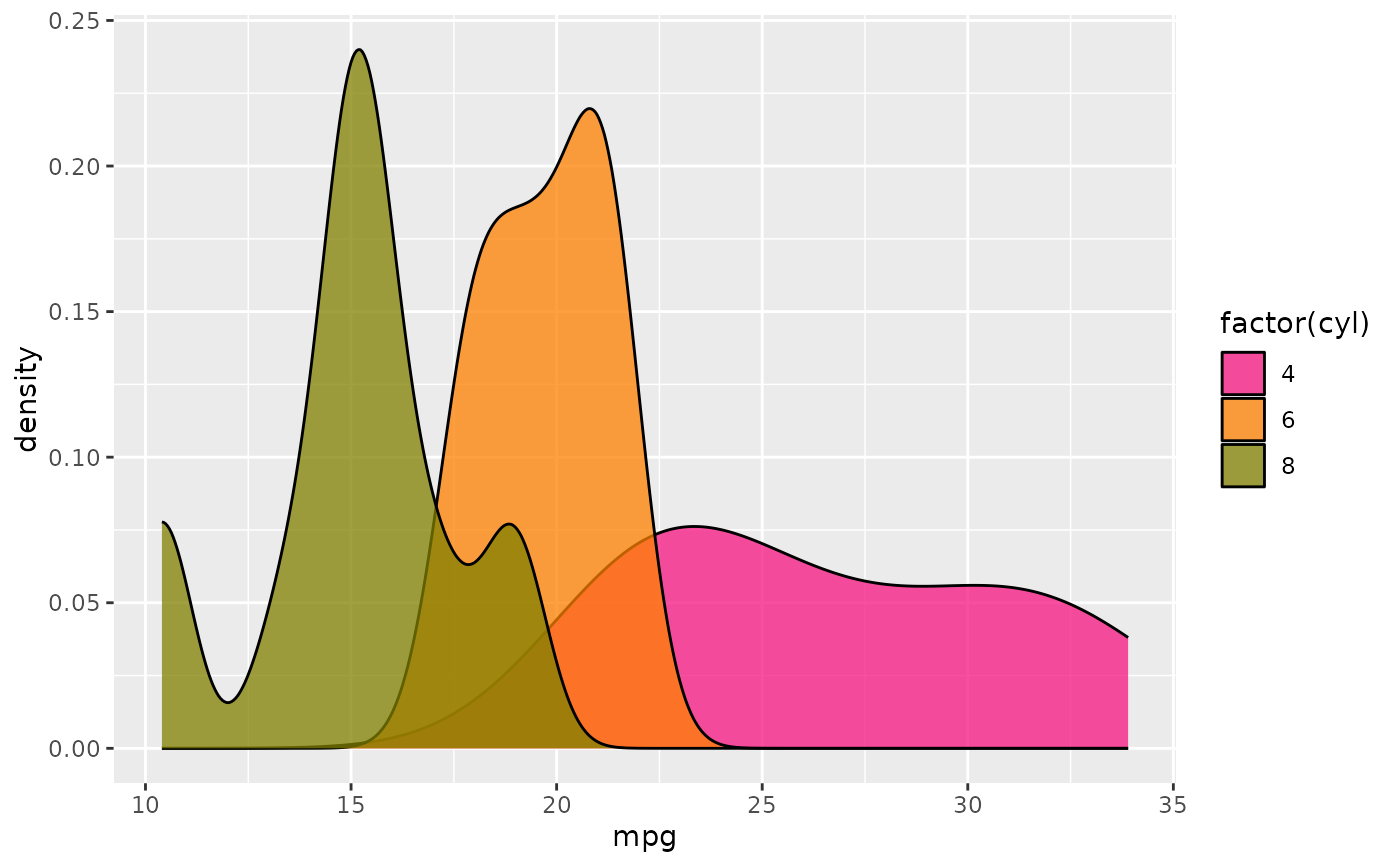 ## try combining the ggprism colour and fill scales
base2 <- ggplot(mtcars, aes(x = mpg, fill = factor(cyl), colour = factor(cyl))) +
geom_density(alpha = 0.75)
base2 +
scale_fill_prism(palette = "floral") +
scale_colour_prism(palette = "floral")
## try combining the ggprism colour and fill scales
base2 <- ggplot(mtcars, aes(x = mpg, fill = factor(cyl), colour = factor(cyl))) +
geom_density(alpha = 0.75)
base2 +
scale_fill_prism(palette = "floral") +
scale_colour_prism(palette = "floral")
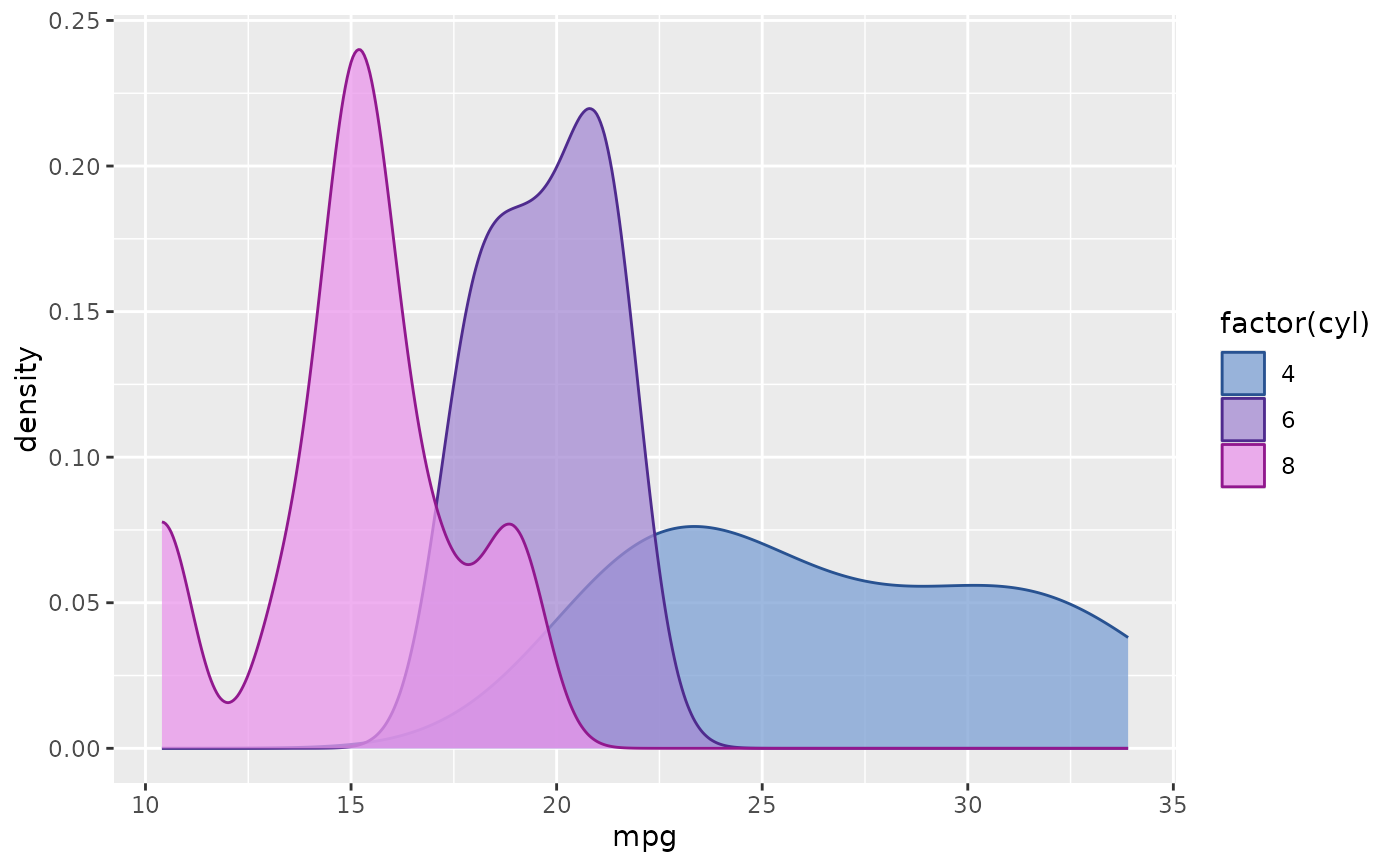 ## change fill scale title in legend
base +
scale_fill_prism(
palette = "candy_bright",
name = "Cylinders"
)
## change fill scale title in legend
base +
scale_fill_prism(
palette = "candy_bright",
name = "Cylinders"
)
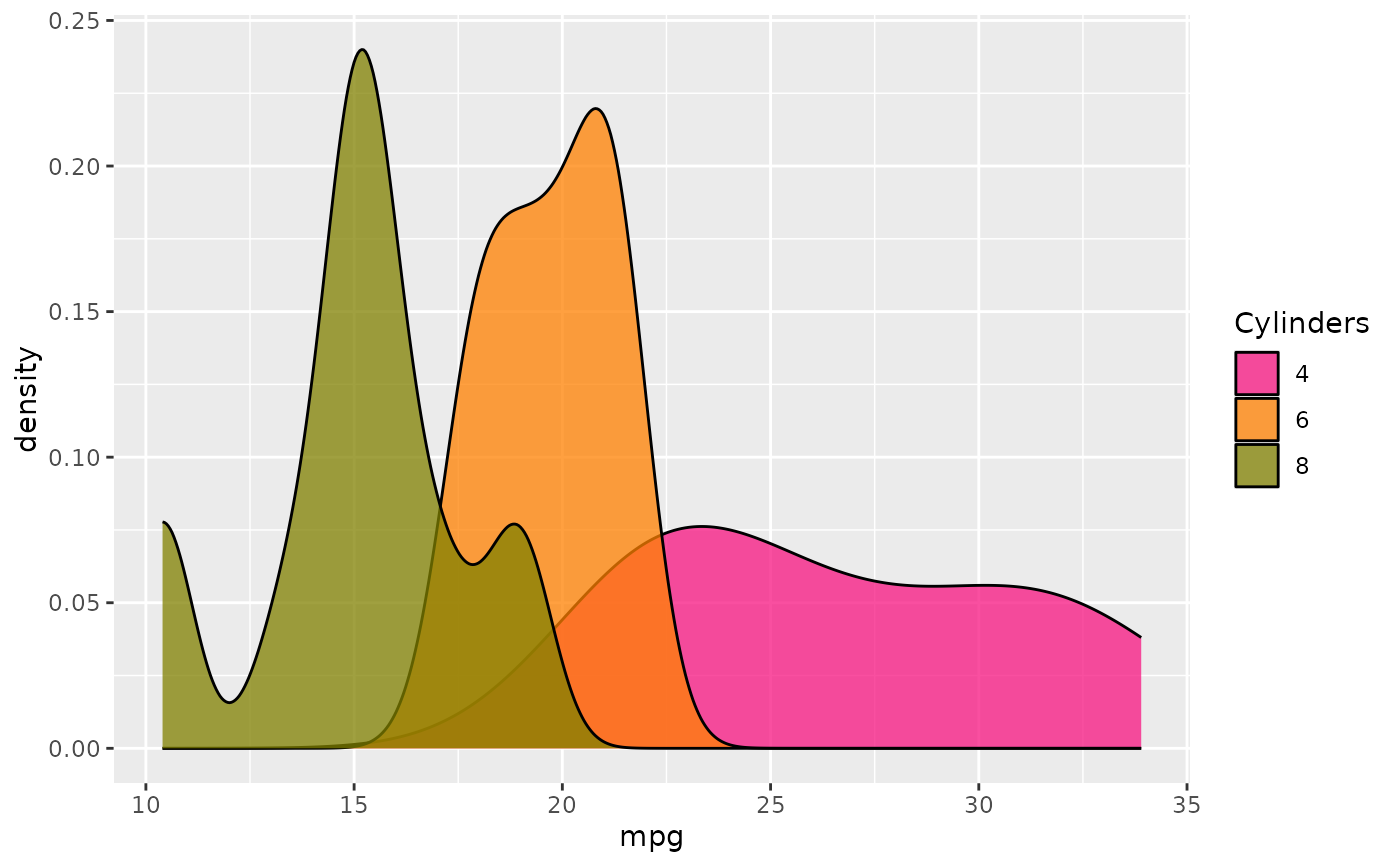 ## change fill labels in legend
base +
scale_fill_prism(
palette = "candy_bright",
name = "Cylinders",
label = c("4 cyl", "6 cyl", "8 cyl")
)
## change fill labels in legend
base +
scale_fill_prism(
palette = "candy_bright",
name = "Cylinders",
label = c("4 cyl", "6 cyl", "8 cyl")
)
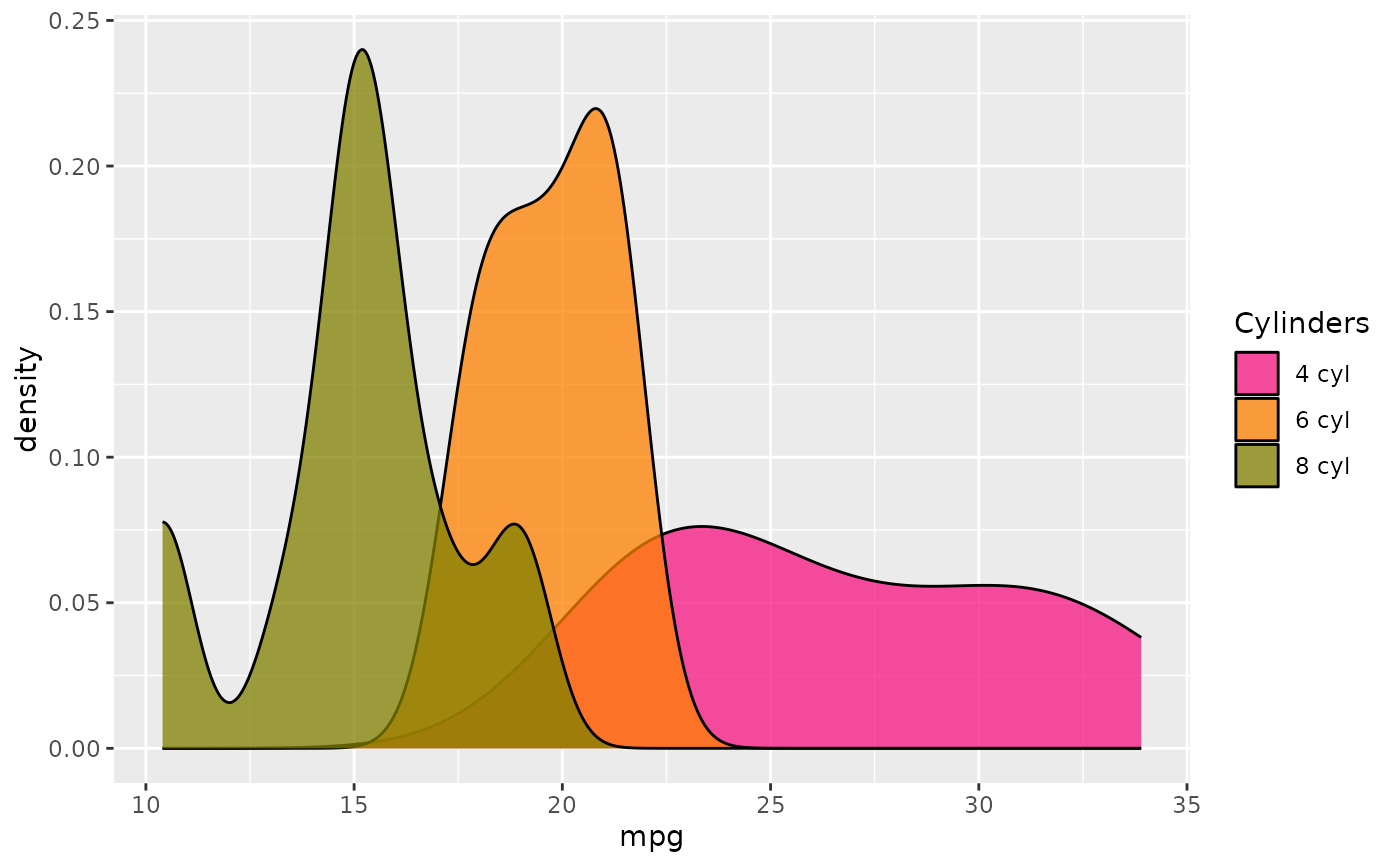 ## change fill labels in legend with a function
base +
scale_fill_prism(
palette = "candy_bright",
name = "Cylinders",
label = function(x) paste(x, "cyl")
)
## change fill labels in legend with a function
base +
scale_fill_prism(
palette = "candy_bright",
name = "Cylinders",
label = function(x) paste(x, "cyl")
)
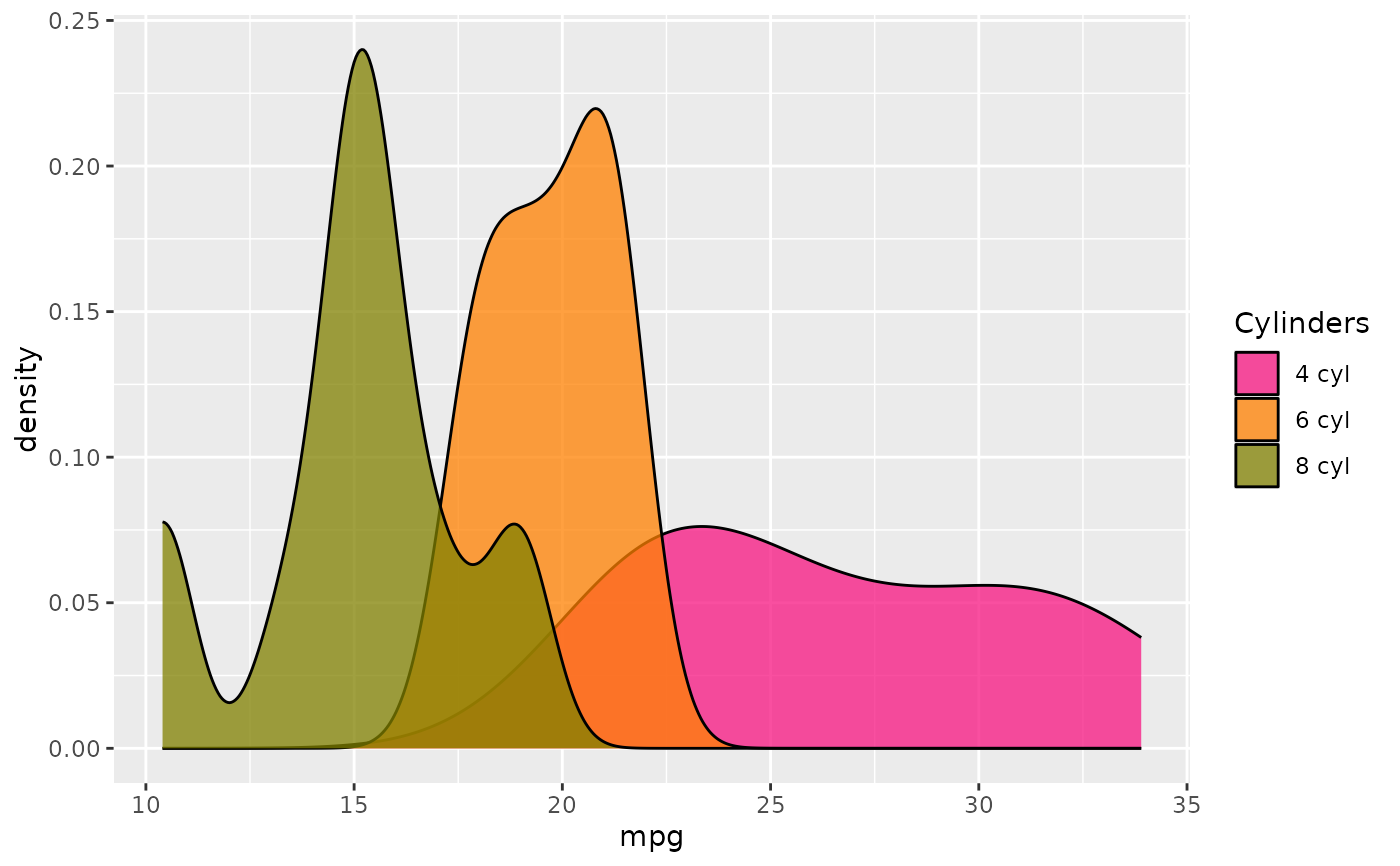 ## change order of fills in legend
base +
scale_fill_prism(
palette = "candy_bright",
name = "Cylinders",
label = function(x) paste(x, "cyl"),
breaks = c(8, 4, 6)
)
## change order of fills in legend
base +
scale_fill_prism(
palette = "candy_bright",
name = "Cylinders",
label = function(x) paste(x, "cyl"),
breaks = c(8, 4, 6)
)
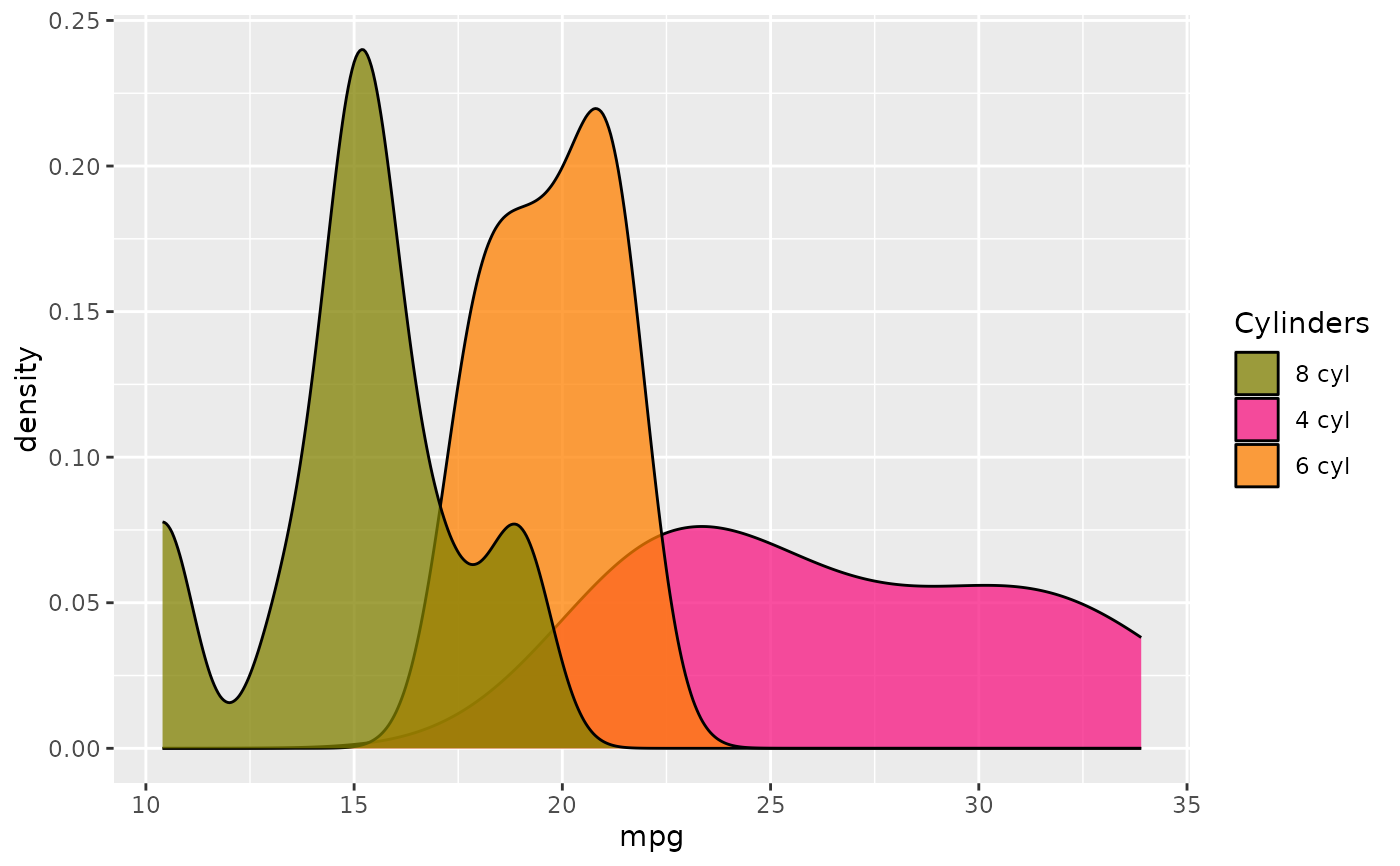 ## to change which fill is assigned to which cyl
## you need to change the factor levels in the underlying data
base <- ggplot(mtcars, aes(x = mpg,
fill = factor(cyl, levels = c(6, 4, 8)))) +
geom_density(alpha = 0.75)
base +
scale_fill_prism(
palette = "candy_bright",
name = "Cylinders"
)
## to change which fill is assigned to which cyl
## you need to change the factor levels in the underlying data
base <- ggplot(mtcars, aes(x = mpg,
fill = factor(cyl, levels = c(6, 4, 8)))) +
geom_density(alpha = 0.75)
base +
scale_fill_prism(
palette = "candy_bright",
name = "Cylinders"
)
